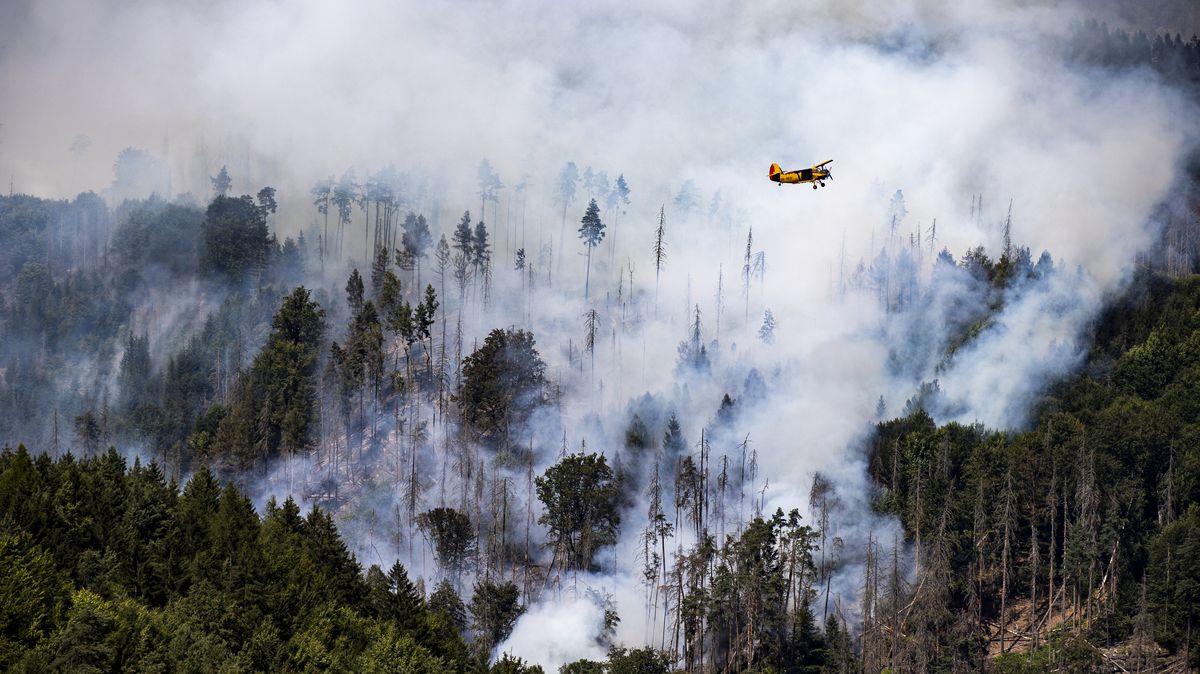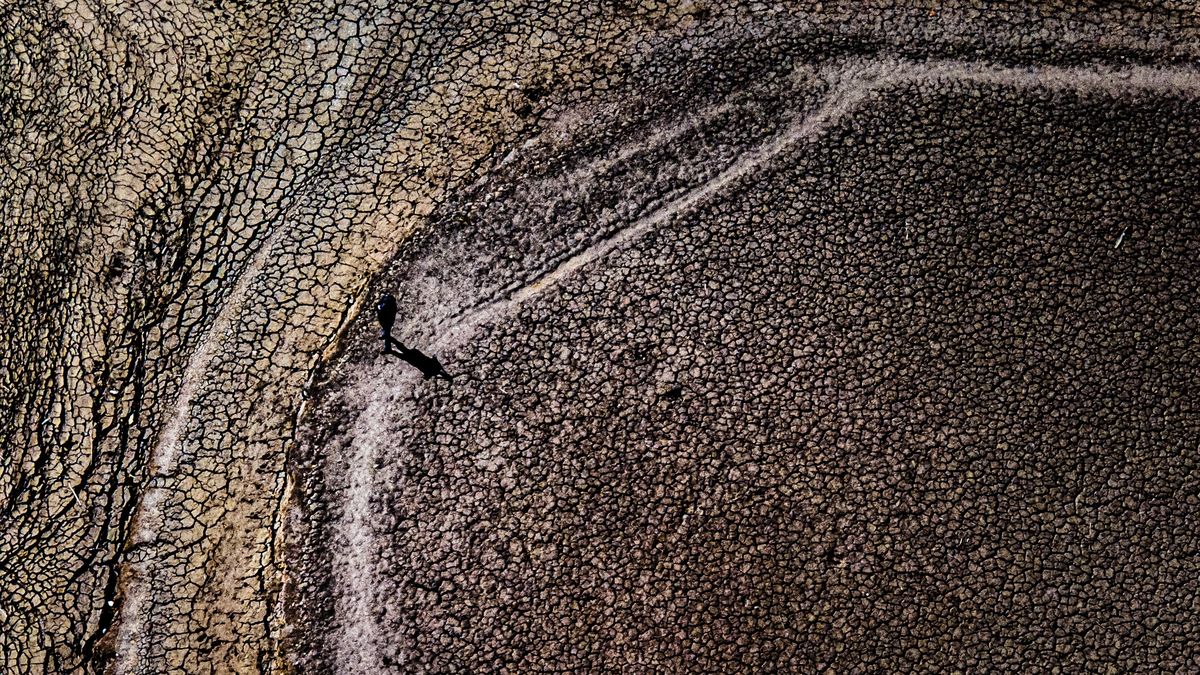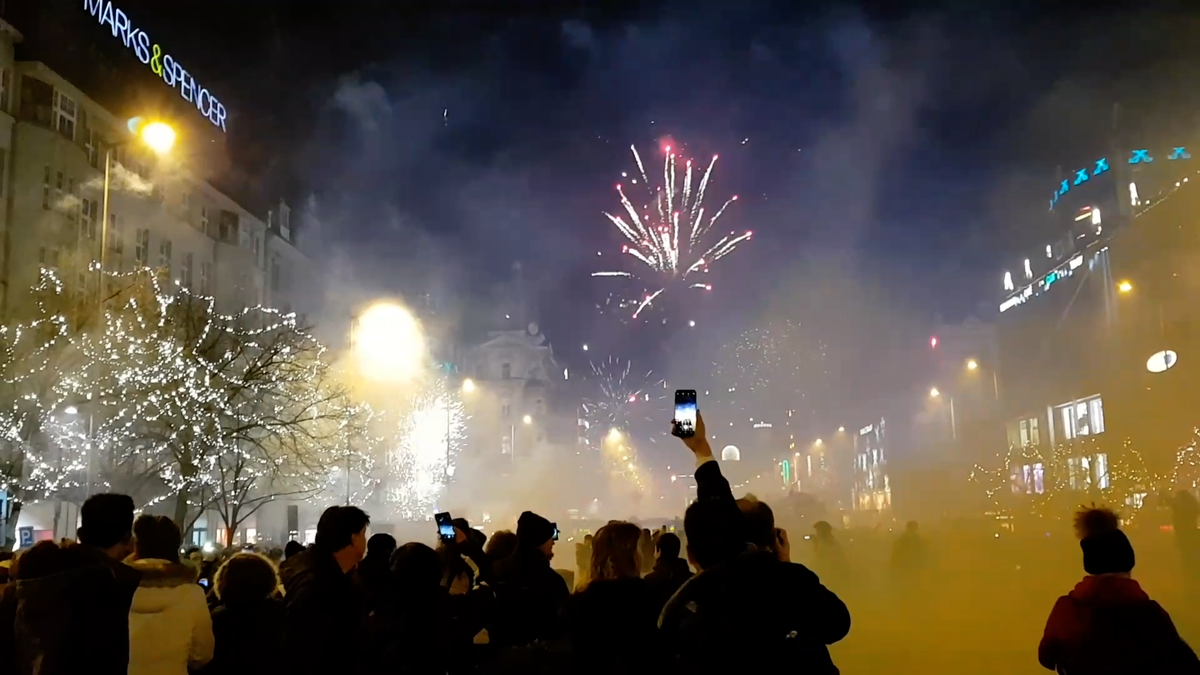Dust and smoke from a fire in Switzerland’s Czech National Park can be seen by people hundreds of kilometers away. Some were awakened by the smell of smoke. The scope of the fire is extraordinary even from a meteorologist’s point of view. Among other things, they monitor how dust particles disperse in the air and in the atmosphere.
At the nearby measuring station eská Lípa nad ránem, they recorded the extraordinary value of the PM10 flying particle. On a normal night, they hover around 10 micrograms per cubic meter. Its value is even twenty times higher in the short term.
“The three-hour rolling value is 217 micrograms. Now it could be even higher,” said Radek Tomšů of the stí branch of the Czech Hydrometeorology Institute.
Experts distinguish several categories of dust in the air according to the size of the particles. PM10 particles measure up to 10 thousandths of a millimeter. The smaller the diameter of the particle, the longer it stays in the air. The particles fly through the air for several hours, the smallest for several weeks. Wind and rain are important factors.
The smoke and dust spread unprecedentedly as far south as Bohemia or the Pardubice region. “I admit that in 20 years of training I have never been in such a situation. With fires, sometimes there is an increase in concentration in some places, but not on a large scale, it is a very extraordinary situation,” added Tomšů.
On windless summer nights, the dust content in the air sometimes reaches values of about 50 micrograms. For example, Kralupy nad Vltavou nad Ránem scores up to 168. “That’s a lot. In winter, the situation is almost like smog. However, rapid increases are followed by rapid declines in value,” adds Tomšů.
The wind was blowing from the southeast, so a fire was shown at the Lípa eská station.
Also pay attention to the second curve – wind speed.
It was the arrival of the cold front and the increase in wind speed that caused a rapid increase in concentration. #air #air quality #PM10 pic.twitter.com/jUtPXyWp9b— Czech Institute of Hydrometeorology (ČHMÚ) (@CHMUCHMI) 26 July 2022
How explain Jáchym Brzezina, head of HMÚ Brno’s air quality department, said emissions from forest fires represent a health risk.
“Forest fires are nothing more than a burning process, and since neither the fuel supply nor the air supply is controlled, it is incomplete (and inefficient) combustion that releases a number of pollutants into the air. By the way, the process is the same as with old kettles, fireplaces, and the like,” explained the expert.
Cardiology and pregnant women
What specific health risks are involved? According to Vladimír Koblížek, head of the Lung Clinic of the Hradec Králové University Hospital, the greatest danger in connection with fires is firefighters fighting the fire on the spot and being exposed to hazardous substances at close range.
“These are often volunteer firefighters who can be at the fire station for hours, so I will care more about their health. I personally smile in front of them and they are heroes to me,” the doctor said.
In addition, from a health point of view, people living around fires are at a certain risk, depending on weather conditions, within a distance of about 10 kilometers.
“Small dust particles, along with other combustion products from forest fires, can exacerbate difficulties for people with respiratory conditions. They are among the risk group and must now move out as little as possible if they are closer to the fire,” the expert explained.
Risk groups include people with asthma, chronic obstructive pulmonary disease, bronchitis, or pregnant women and young children.
“These groups should move out as little as possible or preferably leave if they are within about 10 kilometers of the fire and where smoke is visible. In places that are tens to hundreds of kilometers away, people can smell smoke, but the concentration of pollutants is small and has no impact on health. On the contrary, people are afraid,” the pulmonologist added.
The smell of smoke spreading from Czech Switzerland to other parts of the republic was also felt by Prague residents on Tuesday morning. But for them, the smoke is more unpleasant than harmful and the risks are minimal.
The impact of burning and the release of pollutants into the air is best studied in areas that frequently experience forest fires. Data from Canada, Australia and the United States show that people exposed to these fires have a higher risk of heart problems or premature death. However, these are people who are repeatedly exposed to hazardous substances or live near these common forest fires.
Smoke effect
At the same time, according to Jáchym Brzezina, it is impossible to say for sure how far the impact of the forest fires will be. However, pollution can generally spread even over great distances, which is called long-distance transportation.
At the same time, the distribution of smoke plumes is influenced by several factors, including mainly meteorological conditions and scattering – wind speed, wind direction or atmospheric temperature stratification. Particle size and shape also play a role.
Maybe some of you woke up today because of the smell in the air. This is smoke from the fires around Hřensk.
With the wind changing behind the front to the northwest, the smoke reached very far into the central region, eastern Bohemia, and the northern regions of the Highlands. pic.twitter.com/FwFeQfKXsa— Czech Institute of Hydrometeorology (ČHMÚ) (@CHMUCHMI) 26 July 2022
“People living near burning vegetation should be more careful at this time. Rain would be ideal at this time, which would not only help to extinguish the fire, but is generally a factor that significantly improves air quality. Unfortunately, the Aladin model does not expect rainfall in the coming days,” the expert added.
According to Tomšů, the prophecy was not very favorable regarding the liquidation of the fire. Meteorologists expect heavy rain in the area through Friday or Saturday. “Rain will only help firefighters on weekends,” said Tomšů.
Winds will continue to blow in the region Tuesday and Wednesday. While it helps disperse smoke and dust, it helps the fire spread more quickly. “On Tuesday, at noon, the northwest wind will be blowing at about four or five meters per second. At night it weakens slightly and the direction turns north. We expect significant wind weakening only on Thursday,” added Tomšů.
Massive fire in Czech Switzerland
Photo: Michal Turek, Seznam Zpravy
Fire in Czech Switzerland.
Extensive forest fires engulfed the Swiss Czech National Park, which spread to the surrounding area.

“Certified bacon geek. Evil social media fanatic. Music practitioner. Communicator.”







